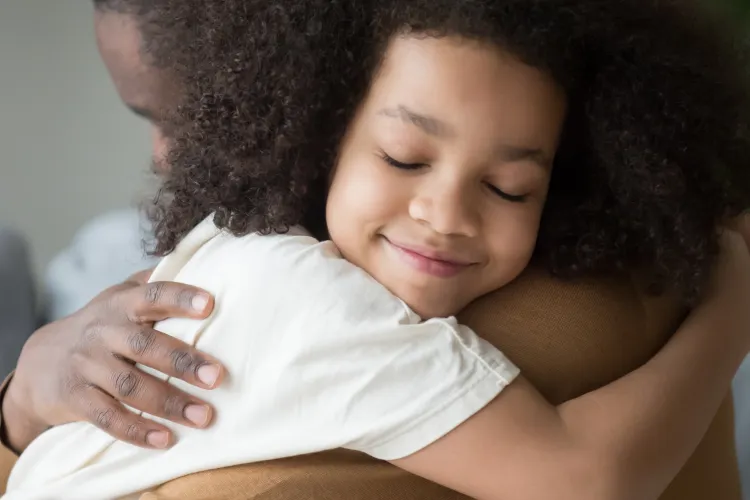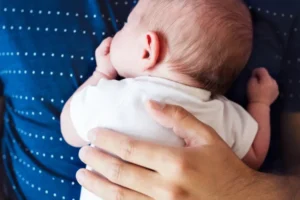By Kenneth Braswell, CEO, Fathers Incorporated
When people speak about adoption, the conversation often circles around paperwork, courtrooms, and waiting lists. In the official, system-based process that defines traditional adoption, we picture social workers, case files, and smiling family portraits.
In many communities, however — particularly in Black and Brown families — there exists another form of adoption. This quiet, instinctive, and centuries-old method is what I call cultural adoption. This form of kinship and community care preserved families long before agencies or policies existed.
To truly understand adoption in America, and to strengthen the systems that govern it, we must hold space for both traditional and cultural adoption.
Over the past year, I’ve had a series of quiet revelations. Friends I’ve known for decades — people whose lives I thought I fully understood — casually revealed that they were adopted. They didn’t announce it with sentimentality or secrecy. It came up in passing, as naturally as mentioning a childhood street or a favorite teacher. These revelations reminded me that adoption is not a label people wear; it’s a story stitched deeply into their sense of belonging.
The Landscape of Traditional Adoption
Traditional adoption — the kind that moves through agencies, foster systems, and private arrangements — remains an essential pillar of family formation in this country. It is structured, documented, and legally binding. It carries the promise of permanency and a safeguard against instability. Yet, the numbers tell a story that deserves more attention.
According to a 2025 report from the National Council for Adoption, adoptions from foster care have declined by 24 percent since peaking in 2019. Over 77,000 children were still waiting to be adopted at the end of 2023, and more than 15,500 youth aged out of foster care without ever finding a permanent family. Meanwhile, private domestic adoptions have increased slightly — by 3 percent since 2019 — and intercountry adoptions have fallen by a staggering 95 percent since their peak in 2004.
Behind these figures are children suspended between systems: too old for quick placements, too traumatized to be easily matched, or simply overlooked. The drop in foster adoptions raises uncomfortable questions. Why, in a nation of abundant resources, are fewer children being brought into permanent homes? Why does bureaucracy still tangle the path to belonging?
Part of the answer lies in access and awareness. Adoption processes, especially traditional ones, often privilege those with means. Legal fees, home studies, travel, and post-placement evaluations can easily total tens of thousands of dollars. For working-class families, especially in communities of color, that reality can shut the door before it even opens.
Other times, systemic inequities (such as restrictive legitimation laws in states like Georgia) further complicate the rights of non-marital fathers, making the landscape even more treacherous. These laws can unintentionally widen the pipeline for private adoptions, where children born outside of marriage may be more easily placed without their fathers’ full legal recognition.
The Silent Strength of Cultural Adoption
Adoption, in its truest sense, has never been about legality alone. In many communities, it has always been about love, obligation, and survival.
Long before there were state agencies or social service departments, there was a cultural system — neighbors taking in children after tragedy, grandparents raising grandchildren, aunts and uncles becoming stand-in parents when life took unexpected turns. In my own family, that story is real. My grandmother and her sister were raised by relatives in North Carolina in the early 1900s. There was no formal documentation, and no paperwork was filed with the court. What existed was something more powerful: a moral covenant sealed by care and commitment.
This is what I call cultural adoption — the informal, often unrecorded, process through which children are absorbed into new homes and loved as their own. It is the practice of making family where life leaves a gap. When I traveled to Ghana years ago, I saw this practice alive in the villages. Elders there were caring for children who had lost their parents, and community members stepped in without question or expectation. It wasn’t a program; it was a way of life.
In African American communities, this cultural tradition has deep roots. Born out of resilience during slavery and reconstruction, it became an unspoken survival mechanism: If one parent was taken, jailed, or lost, someone else stepped forward. We didn’t call it adoption — we called it love. That same spirit persisted through generations, shaping what many of us understand as village parenting.
When Systems Forget Culture
The challenge today is that policy often fails to acknowledge this cultural dimension. Our legal framework recognizes family through documentation, not devotion. Yet, in many households, love operates well beyond the reach of legal systems. There are grandmothers who have raised their grandchildren for decades without formal custody, older siblings who step in as caregivers, and godparents who provide stability when birth parents cannot.
Ignoring these realities means overlooking a significant part of our social safety net. Cultural adoption fills the gaps where the system cannot, especially in under-resourced communities where formal adoption may be inaccessible or intimidating. However, these families often lack the protections, financial assistance, or recognition afforded to formal adoptive families.
Consider this: While traditional adoption ensures access to medical records, inheritance rights, and legal authority for school enrollment or healthcare decisions, cultural adoption often relies on goodwill and community understanding. The lack of legal recognition can complicate even basic tasks, such as enrolling a child in school, accessing medical care, or qualifying for public assistance.
This is why policy reform must honor both sides. Strengthening traditional adoption processes must go hand in hand with legitimizing and supporting cultural care networks. We cannot fix one while ignoring the other.
The Intersections of Love, Law, and Legacy
The difference between traditional and cultural adoption is not a matter of legitimacy. It’s a matter of language and access. Both stem from the same root: a child’s need for belonging. What differs is the pathway. Traditional adoption is built on legality; cultural adoption is built on legacy.
In many ways, they mirror each other. In traditional adoption, a child is chosen. In cultural adoption, a child is claimed. Both involve profound love and responsibility, but only one has the protection of the law, a distinction with consequences.
Imagine a grandmother raising her grandson since birth because her daughter struggles with addiction. The child knows no other home. Legally, she is not his mother, and her care could be disrupted if the state intervenes. Or consider a godparent who steps in after a tragic loss but cannot qualify for adoption due to income or marital status. In these situations, love is abundant, but legal protection is scarce.
The cultural practice of family-making is not unique to the Black community, but it has been especially vital there. For centuries, when systems failed — whether through slavery, segregation, or incarceration — families reassembled themselves through love and resilience. That history deserves acknowledgment in modern adoption policy.
The Need for Integration, Not Division
As we reflect during National Adoption Month, the conversation must expand. We need to see traditional and cultural adoption not as opposing ideas, but as complementary forces in the ecosystem of care.
This integration can take several forms:
- Policy Recognition of Kinship and Cultural Care: States can develop frameworks that formally recognize cultural adoption arrangements, offering simplified guardianship processes or legal protections without the full weight of formal adoption proceedings.
- Community-Based Support Networks: Nonprofits, churches, and local organizations can create programs that provide resources, counseling, and financial aid to informal caregivers — many of whom carry the same burdens as adoptive parents without institutional support.
- Cultural Competency in Child Welfare Systems: Social workers and agency staff need training that reflects the realities of extended family care in communities of color. Recognizing the legitimacy of these arrangements helps prevent unnecessary removals and honors community traditions.
- Reform of Legitimation Laws: In states like Georgia, reforming outdated statutes that hinder non-marital fathers from claiming their children would strengthen biological family preservation and reduce the need for unnecessary private adoptions.
- Public Awareness Campaigns: We must challenge stereotypes about who adopts and why. Adoption should not be seen as charity but as continuity — a bridge between loss and love, culture and care.
Lessons from the Past, a Vision for the Future
Looking at history, we see that adoption — whether cultural or traditional — has always evolved alongside social change. The legal frameworks we now depend on were themselves born from informal practices. Communities acted first; policy followed.
Today, we stand at another turning point. The decline in foster care adoptions and the modest rise in private adoptions suggest we need new models that reflect the diversity of family experiences. Adoption cannot be limited to those with resources or perfect circumstances. It must remain accessible, humane, and culturally sensitive.
The late educator and activist Septima Clark once said, “I believe unconditionally in the ability of people to respond when they are told the truth. We need to be taught to study rather than believe, to inquire rather than to affirm.” The truth about adoption is that it exists in many forms. It’s time our systems reflect that reality.
Reclaiming the Meaning of Family
When I think about the children I’ve met over the years — some raised by birth parents, some by foster families, and some by grandparents or mentors — I am reminded that family is not always formed in delivery rooms. Sometimes, it’s formed in living rooms, in church pews, on playgrounds, or in the quiet promise between adults that no matter what happens, this child will not be alone.
Traditional adoption is vital because it protects these promises through law. Cultural adoption is vital because it preserves them through love. We need both. One ensures permanence; the other ensures connection. The future of adoption must not choose between structure and spirit. It must embrace both.
In the end, every child deserves what all of us are searching for: to be seen, to be claimed, and to be loved — by name, by family, and by community.



